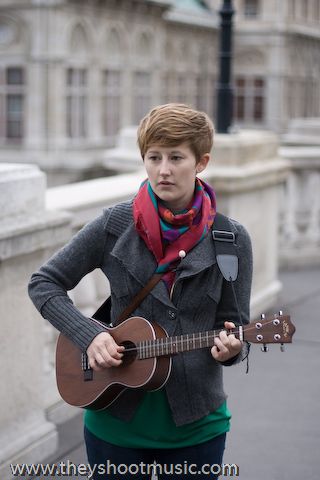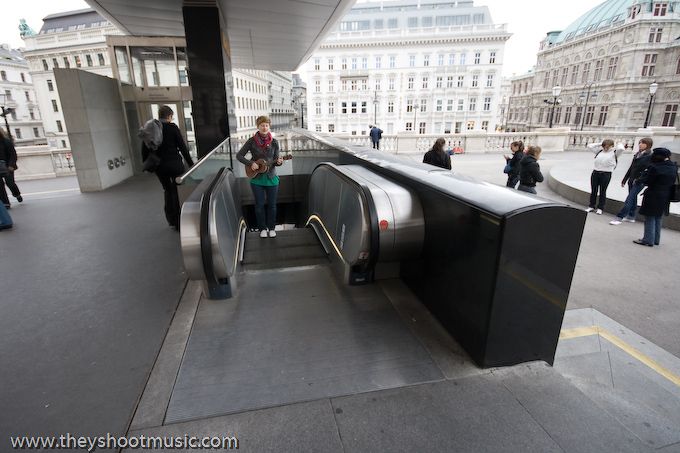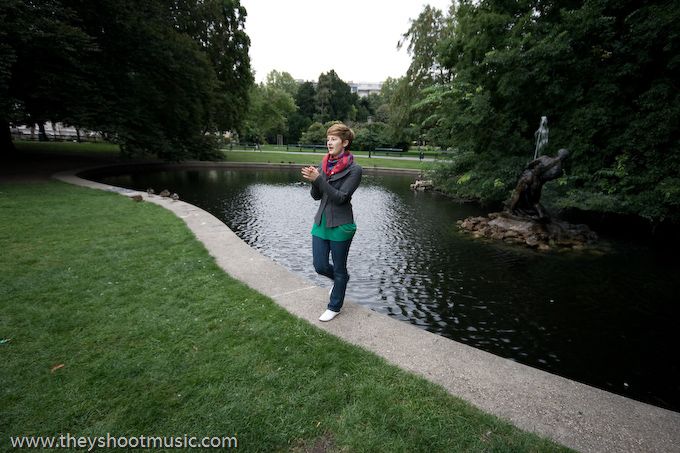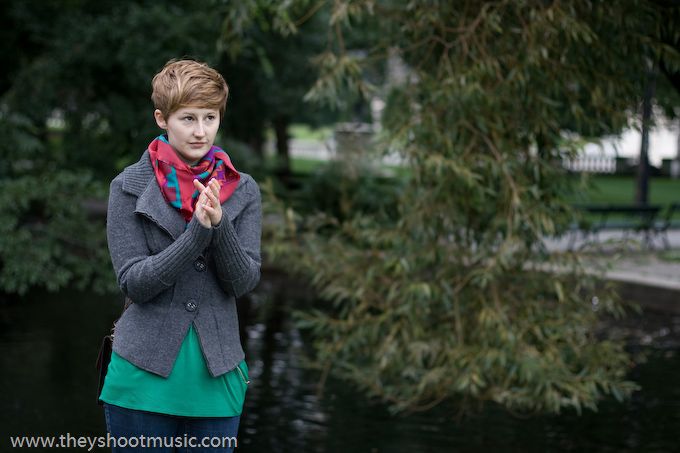Paper Bird
Albertina, Burggarten, 2008
There is this little hide-out in the historical garden at the back of Hofburg, behind the glasshouse with palms and butterflies, close to the duck pond and just a stone-throw away from the cupreous statue of Emperor Franz Joseph. Paper Bird ensconces herself behind serried fir branches to perform – surrounded by lush greenery – “Garden Garden”. Playing balladesque and simple melodies Anna Kohlweis does a metaphorical, magical story-telling. The Viennese artist tinkers a whole new universe with her music, where humans and animals have reversed roles, where the characters fall out of contemporary zoological catalogs (the second album is entitled with the onomatopoetic word “Cryptozoology”) and emotions are packed into sonorous origami patterns (as the artist-name already suggests and what she used for the videoclip “None Of The Above”) that flash upon the inner eye. With her love for the details, her spiritedness of leaving the instrument aside to carry on the song just with her voice and her fond creating of her own quirky universe (she even does the illustration for her albums and fanzines), Paper Bird attracts various people. A boy with a red jelly bag cap bops around and two parking attendants get sceptical about our little hide-out. If they had caught the flair of our playful fairytale-setting, they would not have suspected us of doing drugs.
- Photography
- Simon Brugner
- Artist
- Paper Bird





Albertina
With more than 1 million prints and 60,000 drawings the museum Albertina contains one of the biggest graphic collections in the world. Albrecht Dürer’s famous “The Field Hare” or “Hands folded for Prayer”, women-studies from Gustav Klimt and classics from Michelangelo, Rubens, Schiele, Cézanne, Rembrandt, Kokoschka, Picasso or Rauschenberg are exhibited in the intra-urban Palais Albertina that has apart from its permanent collection very popular changing exhibitions. An Architecture collection and a newly created collection of photographs also belong to the museum that was founded in 1776 by Duke Herzog Albert of Saxe-Teschen. Built on the remains of the Augustinian bastion and on one of the last preserved section of the fortification wall, the building stretches eleven metres above street level. The museum was severely destroyed by air raids in 1945 and has undergone various renovations. The last construction work was in 2004 when the Austrian architect Hans Hollein designed the 64 metres long, titan flying shed that gives the museum’s entrance its distinctive body structure. Albertina is famously surrounded by the Hofburg, the Burggarten, the Opera, the Hotel Sacher, the Memorial against War and Fascism and the Filmmuseum with Fiakers (Vienna’s horse-cabs) waiting in their center at the Albertinaplatz.
Burggarten
Lonesome guitar players, amorous couples, groups of teenagers – Burggarten with its small duck pond, shady trees and well-kept lawn is a popular place to hang out on sunny afternoons. Be it students coming out of the National Library or tourists exhausted from the visit of Hofburg Palace or the Albertina Museum, Burggarten is a welcome space to recreate from one’s Inner City duties. The park lies in the very center of Vienna, with Ringstraße, the huge Art-Nouveau glass house Palmenhaus and the newest parts of Hofburg adjoining directly. In the 1820s Burggarten was established by court architect Ludwig von Remy and court gardener Franz Antoine Senior, with the help of Emperor Franz II himself, who was a trained gardener as well. The park remained the Emperor’s private garden for a century until it was opened to the public after the decline of the monarchy in 1919. Like in most Viennese parks, the heavy wrought-iron gates of Burggarten get closed in the evening.